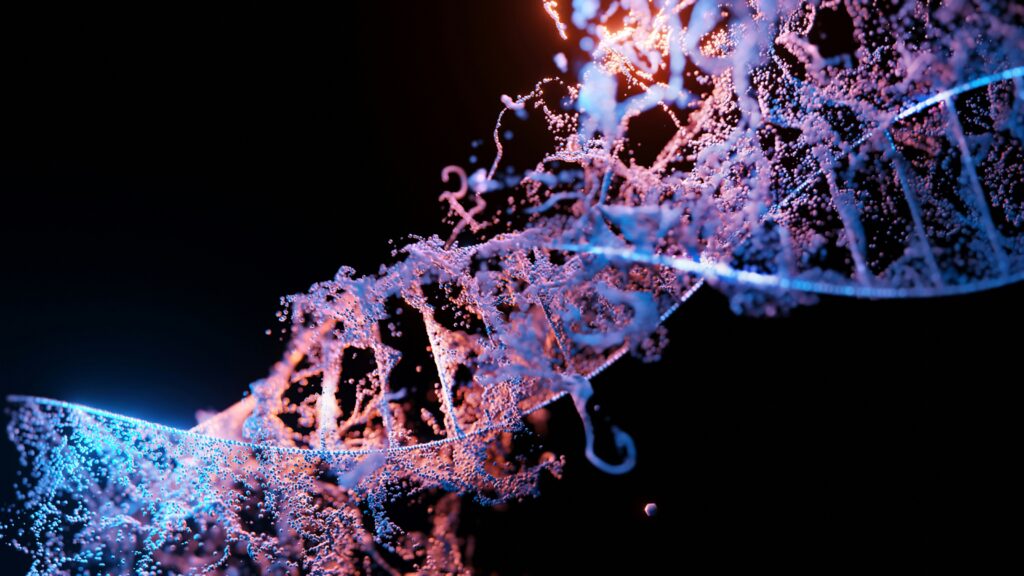Do you remember the simple days? Recall your fond memories of learning about organelles in introductory biology. This is where we learned our favorite biology fact, that the mitochondria is the powerhouse of the cell. Sigh, those were the days. Well, recently the field of biology has discovered a new type of organelles in the cell; membraneless organelles! They are formed through liquid-liquid phase separation (LLPS). If you imagine the droplets formed when you combined oil and water, that’s a form of LLPS. Membraneless organelles rely on LLPS for rapid and reversible cell compartmentalization.
In 2019, researcher Maria Hondele and her team took particular interest in investigating membraneless organelles, focusing specifically on DEAD-box ATPases (DDX) and their role in regulating them. DEAD-box ATPases keep ribonucleoprotein complexes from misfolding or building up over time. The role of DDX-mediated phase separation in compartmentalizing RNA processing is a rare cellular organization conserved across prokaryotes and eukaryotes over time (Hondele 2022). Highly conserved proteins have withstood the test of evolution and have continued to be passed down through generations without significant mutation. Hondele looked specifically at RNA-dependent DEAD-box ATPases because they regulate the RNA movement in and out of the membraneless organelles.
This investigation focused on Dhh1, which is a DEAD-box ATPase specific to Saccharomyces cerevisiae (yeast). A wide range of assays were run to systematically determine the conditions required for the in vitro formation of Dhh1 liquid droplets. Liquid droplets are formed through LLPs and are indicators of membraneless organelles. Hondele found that liquid droplet formation is a fickle process that requires specific amounts of RNA and ATP to be added to the system and the cell environment to be at a low pH and salt concentration (Hondele 2019). Additionally from a DNA standpoint, the DDX itself must have low-complexity domain tails which means the ends of the proteins do not consist of a large variety of amino acids (Hondele 2019).
After the initial investigation of the DDX ATPase and how it runs controls Dhh1 droplet formation, Hondele, and her team investigated DDX ATPase’s role in the regulation of RNA. Through a series of experiments, they found that DDX ATPases have played an extensive role in RNA regulation. The DDX ATPases can actually control the RNA maturation steps so they become spatially and temporally separated in distinct membraneless organelles (Hondele 2019). This means that each membraneless organelle may specialize in one step of the RNA maturation process so that the RNA must move between different organelles throughout the process. Of course, the release and transfer of RNA is regulated by ATPase activity, confirming DDX ATPase’s role as the omnipotent overlord of RNA. The DDXs derive their power from the low-complexity domains. These domains give DDXs the intrinsic ability to set up distinct compartments and when teamed up with the ATPases, they can influence the partitioning of RNA molecules between compartments (Hondele 2019).
Hondele and her team managed to uncover a complex and extensive dictatorship that has been operating for years under our very noses and in our very cells. The well-established and conserved cellular network of DEAD-box ATPases allows the RNA processing steps to be regulated, leading to DEAD-box ATPase control over maturation state, RNP composition, and ultimately RNA fate.
Unfortunately, we are still in the investigation phase and are yet to decide on how best to manipulate this dictatorship to benefit us. Current intelligence indicates that the dysregulation of DDXs could have pathological consequences that could contribute to the development of aggregation diseases, such as Parkinson’s, Alzheimer’s, Amyotrophic lateral sclerosis, and Frontotemporal Dementia (Gomes 2018). Luckily liquid-liquid phase separation has provided a mechanistic link between normal cellular function and disease phenotypes. Over time, these liquid droplets become more static and aggregated, likely leading these protein aggregates to be an end-stage phenotype after aberrant phase separation has overwhelmed cellular machinery that ordinarily reverses these altered phases (Gomes 2018). Through further study and comprehension of how DDXs contribute to these diseases, new treatments could be developed.
Literature Cited:
Gomes, E,. Shorter, J. The molecular language of membraneless organelles. J. Biol Chem. 2018; 294(18):7115-7127. 10.1074/jbc.TM118.001192
Hondele, M., Sachdev, R., Heinrich, S., Wang, J., Vallotton, P., Fontoura, B.M.A., Weis, K. DEAD-box ATPases are global regulators of phase-separated organelles. Nature. 2019; 573(7772):144-148. 10.1038/s41586-019-1502-y.
Hondele, M., Weis, K. The Role of DEAD-Box ATPases in Gene Expression and the Regulation of RNA-Protein Condensates. Annu Rev Biochem. 2022; 91:197-219. 10.1146/annurev-biochem-032620-105429.

